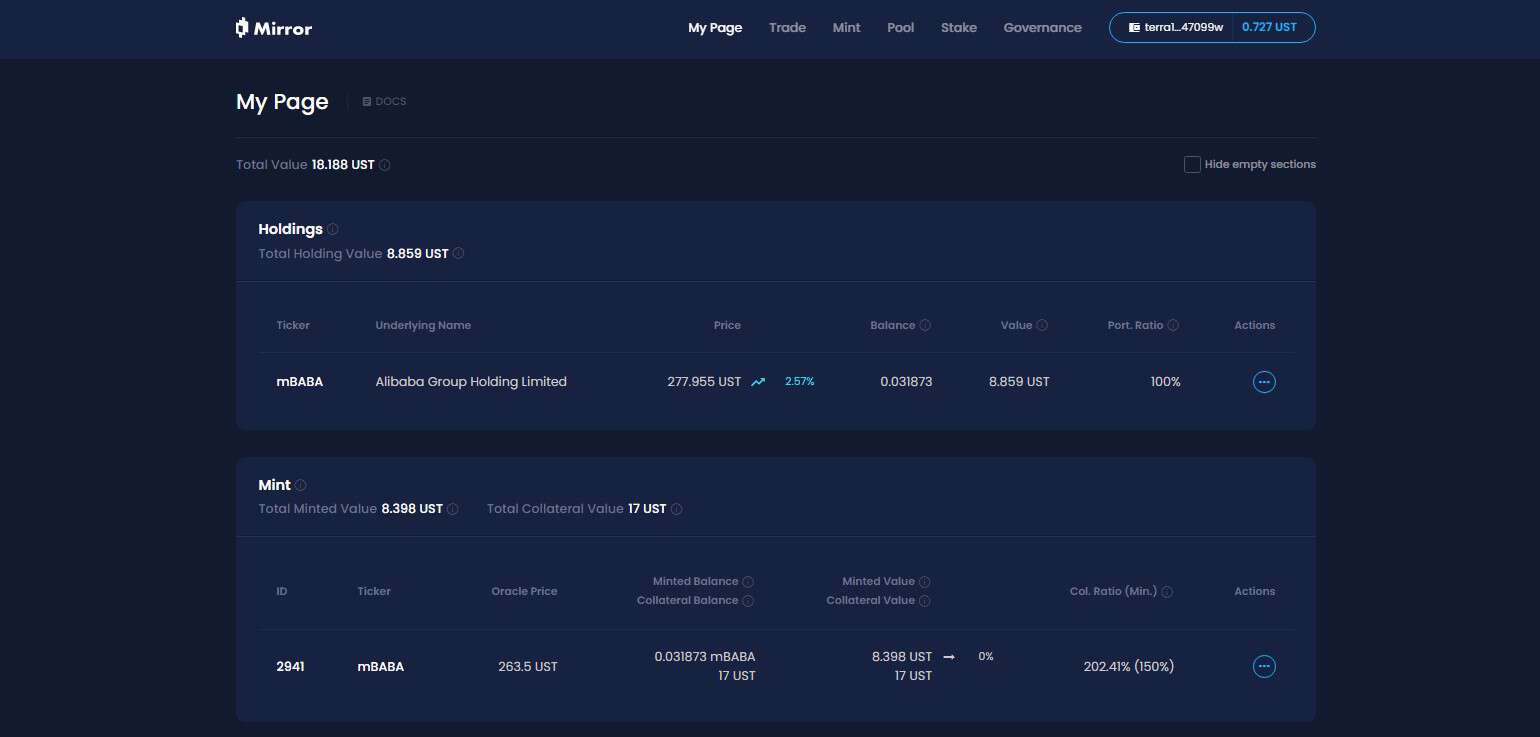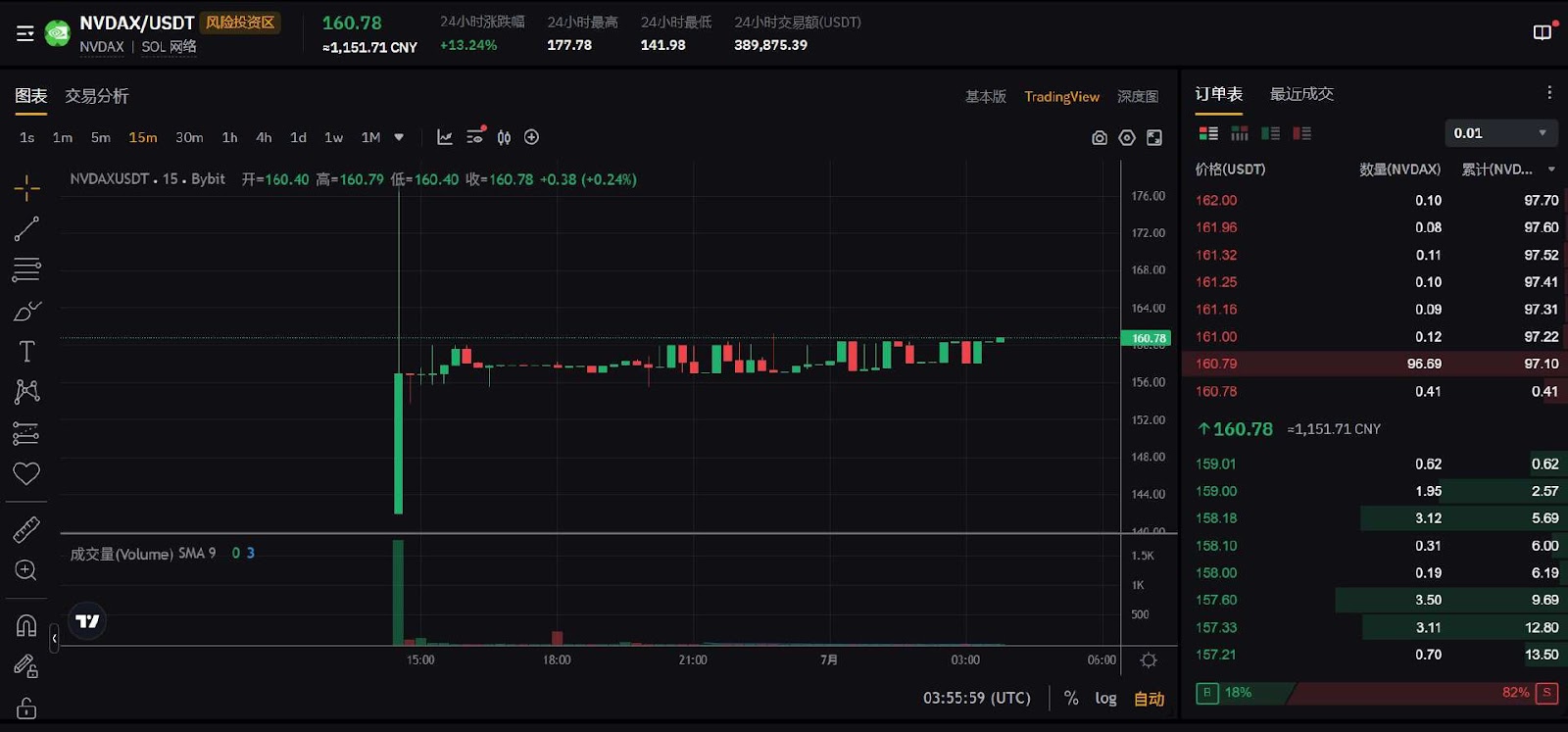From dollar stablecoins to the tokenization of US stocks, "Crypto bless America" may not just be a joke.
Written by: Tyler
Have you ever traded US stocks on-chain?
Upon waking up, Kraken launched xStocks, the first batch supporting trading of 60 US stock tokens; Bybit quickly followed with popular stock token pairs like AAPL, TSLA, NVDA; Robinhood also announced it will support US stock trading on the blockchain and plans to launch its own public chain.
Whether the wave of tokenization is just old wine in new bottles, US stocks have indeed become the "new favorite" on-chain overnight.
However, upon closer examination, this new narrative woven by dollar stablecoins, the tokenization of US stocks, and on-chain infrastructure seems to be plunging Crypto into financial narratives and geopolitical games, inevitably sliding towards a new role positioning.
Tokenization of US Stocks is Not a New Concept
The tokenization of US stocks is not a new concept.
In the last cycle, representative projects like Synthetix and Mirror had already explored a complete set of on-chain synthetic asset mechanisms. This model not only allows users to mint and trade "US stock tokens" like TSLA and AAPL through over-collateralization (such as SNX, UST), but it can also cover fiat currencies, indices, gold, and crude oil, almost encompassing all tradable assets.
The reason lies in the synthetic asset model, which tracks the underlying assets and over-collateralizes to mint synthetic asset tokens: for example, with a collateralization rate of 500%, it means users can stake $500 worth of crypto assets (like SNX, UST) into the system, thereby minting synthetic assets (like mTSLA, sAAPL) pegged to the asset price and trading them.
Since the entire operational mechanism uses oracle pricing + on-chain contract matching, all transactions are completed by the protocol's internal logic, with no real trading counterpart, theoretically providing a core advantage of achieving infinite depth and a no-slippage liquidity experience.

So why is this synthetic asset model moving towards large-scale adoption?
Ultimately, price pegging ≠ asset ownership. The US stocks minted and traded under the synthetic asset model do not represent real ownership of the stocks in reality; it is merely "betting" on the price. Once the oracle fails or the collateral assets collapse (as Mirror did during the UST crash), the entire system faces risks of liquidation imbalance, price decoupling, and user confidence collapse.
At the same time, an easily overlooked long-term factor is that US stock tokens under the synthetic asset model are destined to be a niche market in Crypto—funds only circulate within the on-chain closed loop, with no institutions or brokers involved. This means it will always remain at the "shadow asset" level, unable to integrate into the traditional financial system, establish real asset access and funding channels, and few are willing to launch derivative products based on this, making it difficult to leverage structural inflows of incremental funds.
Therefore, although they were once popular, they ultimately failed to take off.
New Structure for US Stock Capital Flow
This time, the tokenization of US stocks has adopted a new approach.
Taking the US stock token trading products launched by Kraken, Bybit, and Robinhood as examples, from the disclosed information, it is not price pegging or on-chain simulation, but actual stock custody, with funds flowing into US stocks via brokers.
Objectively speaking, under this model of US stock tokenization, any user only needs to download a crypto wallet, hold stablecoins, and can easily buy US stock assets anytime and anywhere on a DEX, bypassing account opening thresholds and identity checks. The entire process does not require a US stock account, has no time zone differences, and no identity restrictions, directly funneling funds into US stocks on-chain.
From a micro perspective, this allows global users to buy and sell US stocks more freely, but from a macro perspective, this is actually the US dollar and US capital markets leveraging Crypto as a low-cost, high-flexibility, 24/7 channel to attract global incremental funds—after all, under this structure, users can only go long, cannot short, and have no leverage or non-linear return structures (at least for now).

Imagine a scenario where a non-Crypto user in Brazil or Argentina suddenly discovers they can buy US stock tokens on-chain or on a CEX. They only need to download a wallet/exchange, convert local assets to USDC, and with just a few clicks, they can buy AAPL or NVDA.
On the surface, this simplifies the user experience, but in reality, it creates a "low-risk, high-certainty" capital flow structure for US stocks designed for global funds. The hot money of Crypto users worldwide can flow into the US asset pool with unprecedented low friction and cross-border ease, allowing people around the world to buy US stocks anytime and anywhere.
Especially as more L2s, exchanges, wallets, and other native infrastructures connect to these "US stock trading modules," the relationship between Crypto and the US dollar, Nasdaq will become more obscure and more solid.
From this perspective, a series of "new/old" narratives surrounding Crypto are being designed into a distributed financial infrastructure specifically for American financial services:
US Treasury stablecoins → Global currency liquidity pool
US stock tokenization → Nasdaq's traffic entry
On-chain trading infrastructure → Global transfer station for US brokers
This may be a flexible siphoning method for global funds, and regardless of how conspiratorial it sounds, at least Trump or the next American decision-maker may fall in love with this new narrative of "US stock tokenization."
How to View the Pros and Cons of "US Stock Tokenization"?
If we look purely from the perspective of the Crypto circle, does US stock tokenization have any appeal, or what impact might it have on the on-chain cycle?
I believe it needs to be viewed dialectically.
For users lacking access to US stock investment channels, especially Crypto natives and retail investors from third-world countries, US stock tokenization equals an unprecedented low-threshold pathway, qualifying as "asset equality" that crosses barriers.
After all, as a super market that has seen the emergence of star stocks like Microsoft, Apple, Tesla, and Nvidia, the "historic bull market" of US stocks has always been a topic of great interest in the investment community, making it one of the most attractive asset classes globally. However, for the vast majority of ordinary investors, the barriers to participating in trading and sharing dividends have always been relatively high: account opening, fund transfers, KYC, regulatory restrictions, time zone differences… various barriers have deterred countless people.
Now, as long as you have a wallet and a few stablecoins, even in Latin America, Southeast Asia, or Africa, you can buy Apple, Nvidia, or Tesla anytime and anywhere, achieving the democratization of dollar assets among global users. In short, for underdeveloped regions where local assets cannot outperform US stocks or even inflation, US stock tokenization undoubtedly provides unprecedented accessibility.
In contrast, within the Crypto circle, especially among trading users represented by the Chinese-speaking community, there is actually a high overlap with the US stock investment circle. Most people already have US stock accounts and can access the global financial system with a single click through banks and brokers like Interactive Brokers (my personal daily use is a combination of SafePal/Fiat24 + Interactive Brokers).
For these users, US stock tokenization seems a bit half-baked—only allowing long positions, lacking derivative products, and not even basic options or margin trading, which is hardly trading-friendly.

As for whether US stock tokenization will further siphon off the crypto market, let's not rush to dismiss it. I think it might be a window of opportunity for a new round of "asset Lego" after the DeFi ecosystem clears out low-quality assets.
After all, one of the biggest problems currently facing on-chain DeFi is the severe lack of quality assets. Aside from BTC, ETH, and stablecoins, there are not many assets with real value consensus, and many altcoins are of questionable quality and highly volatile.
If in the future these actual stock custody and on-chain issued US stock tokens can gradually penetrate into DEXs, lending protocols, on-chain options, and derivatives systems, they could completely become new foundational assets, supplementing on-chain asset portfolios and providing DeFi with more certain value materials and narrative space.
Moreover, the current US stock tokenization products are essentially spot custody + price mapping, lacking leverage and non-linear return structures, inherently lacking deep financial tool support. It all depends on who can first create highly combinable and liquid products, who can provide an integrated on-chain experience of "spot + shorting + leverage + hedging."
For example, as high-credit collateral in lending protocols, constructing new hedging targets in options protocols, forming a combinable asset basket in stablecoin protocols. From this perspective, whoever can first create an integrated on-chain trading experience of spot + shorting + leverage + hedging is likely to build the next on-chain Robinhood or on-chain Interactive Brokers.
For DeFi, this may be the real turning point.
It all comes down to who can reap the benefits of on-chain products from this new narrative.
In Conclusion
Starting in 2024, the question of whether "Crypto can still revolutionize TradFi" will no longer be a topic worth discussing.
Especially this year, through stablecoins penetrating traditional financial channels, bypassing sovereign barriers, tax obstacles, and identity checks, ultimately establishing a new dollar channel with Crypto has become a core storyline of many recent narratives led by compliant dollar stablecoins.
"Crypto bless America" may not just be a joke.
免责声明:本文章仅代表作者个人观点,不代表本平台的立场和观点。本文章仅供信息分享,不构成对任何人的任何投资建议。用户与作者之间的任何争议,与本平台无关。如网页中刊载的文章或图片涉及侵权,请提供相关的权利证明和身份证明发送邮件到support@aicoin.com,本平台相关工作人员将会进行核查。




